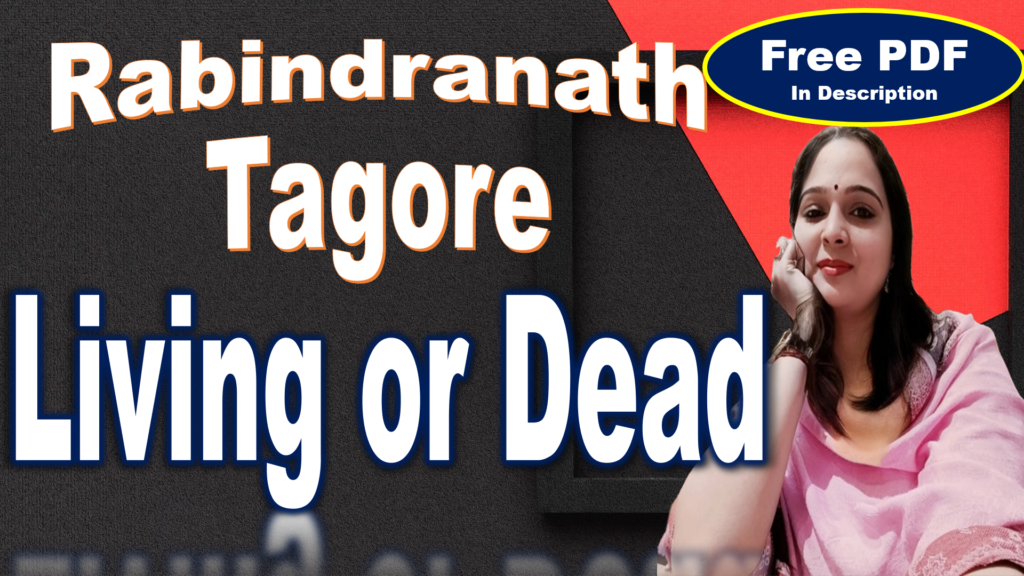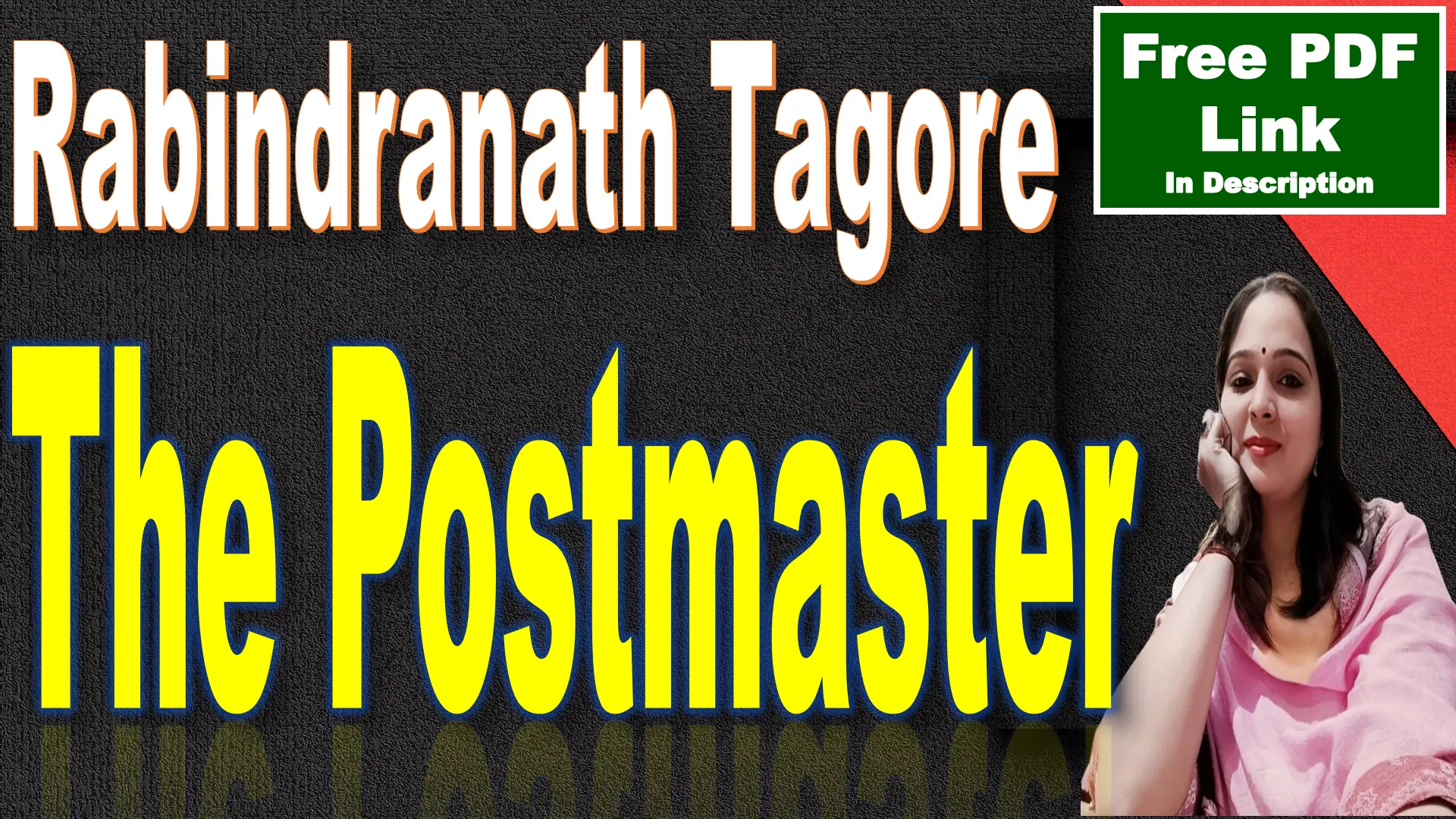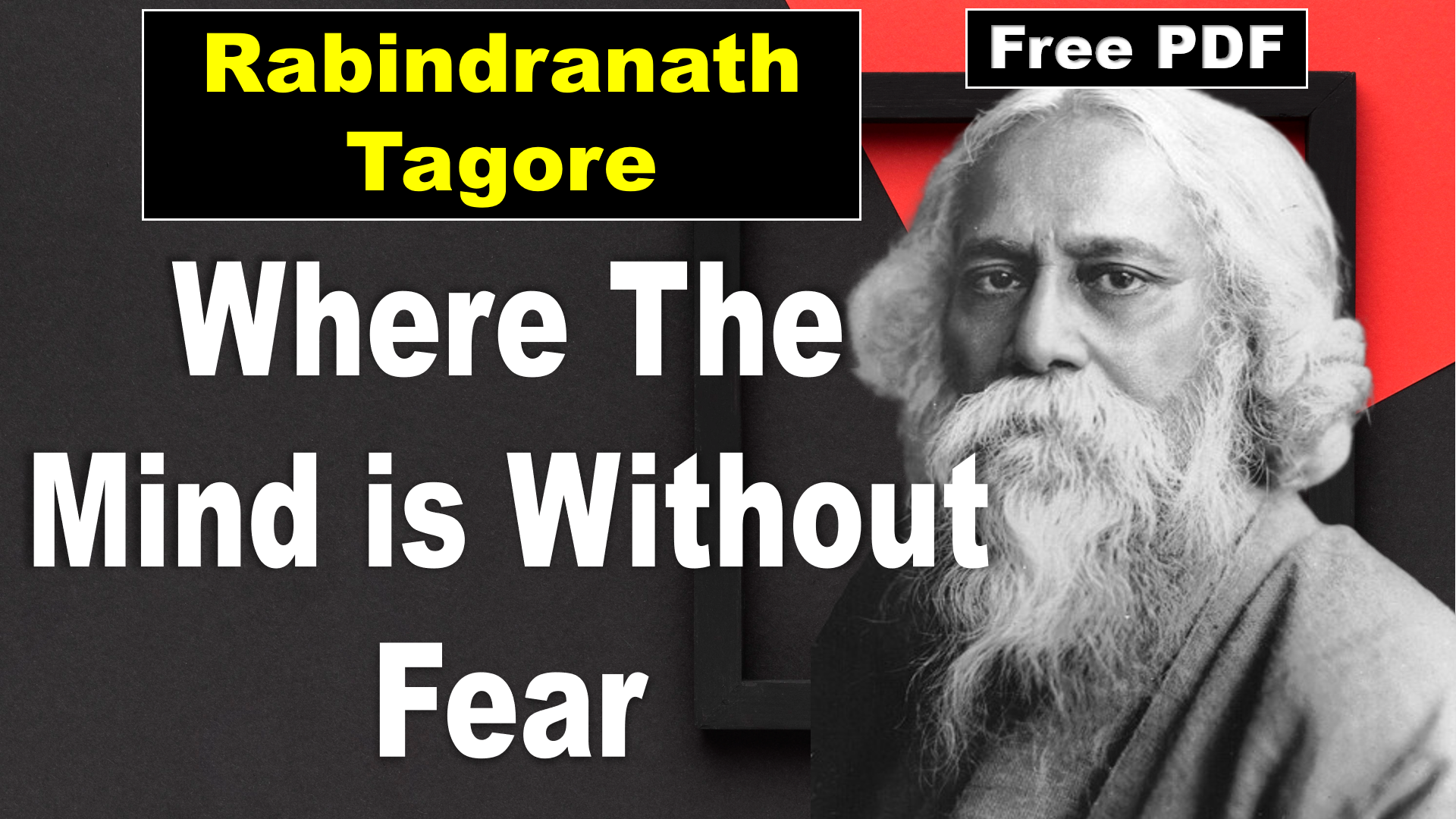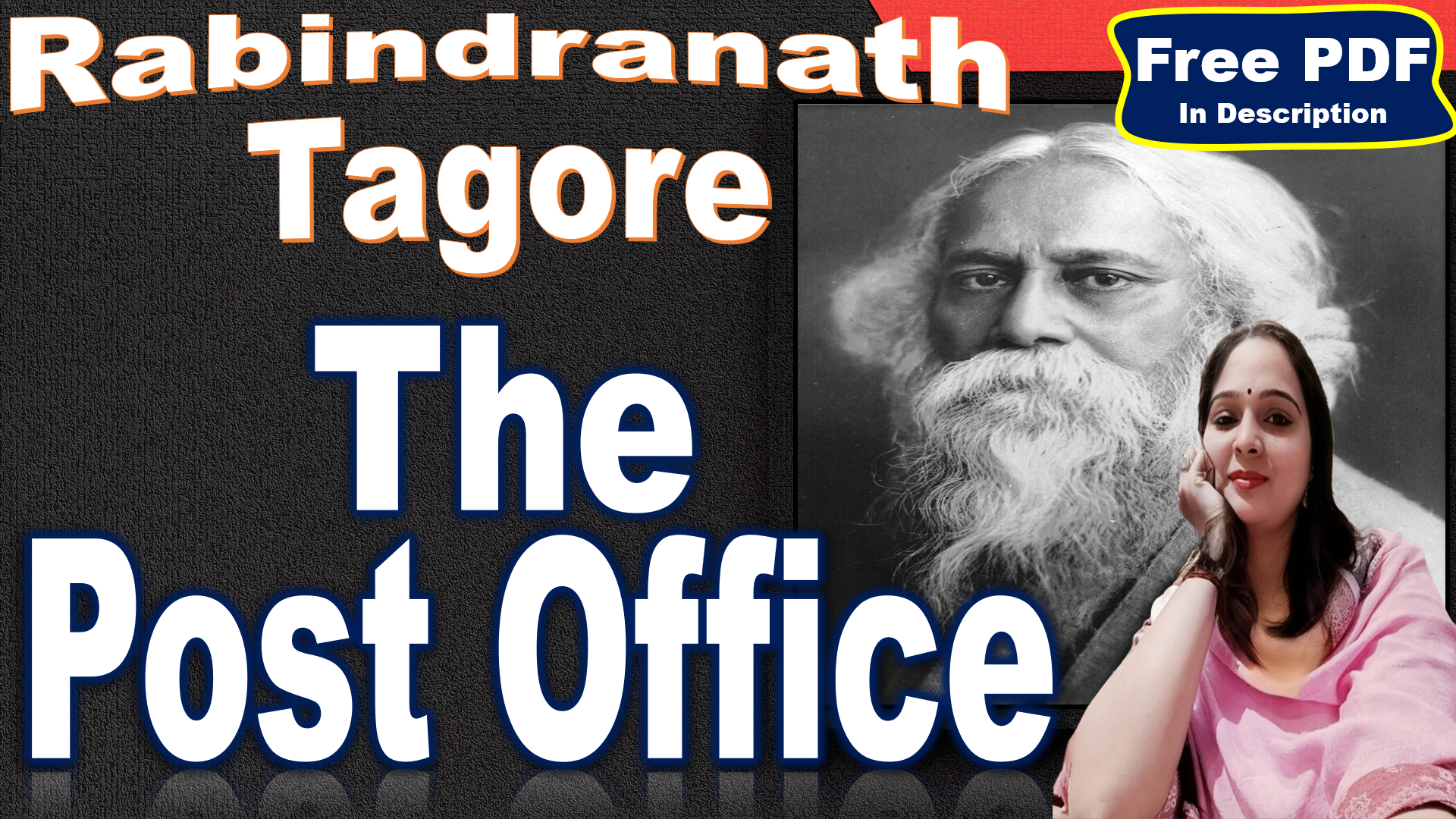
Themes
“Living or Dead” by Rabindranath Tagore is a powerful exploration of societal norms and feminist themes. The story is set in late nineteenth and early twentieth-century Bengali society, a time when widows, especially young ones, were marginalized and their needs ignored.
The protagonist, Kadambini, is a childless widow who is treated as a sub-human by society. She is only remembered because she was dispensable even though she seems to be the only person who adores her nephew Shatish and looks after him while his mother spends her time socializing and playing card games.
Kadambini’s sudden death and subsequent resurrection symbolize her struggle against these societal norms. Her life in her in-law’s place was far from happy, and her only comfort was the little boy Shatish, the sole male heir to the property. When she goes into a comatose state after a bout of heart pain, she wakes up to find herself evacuated from her home and at the cremation grounds.
She realizes that her family had not even decided to give her a decent funeral and have done away with her even though she was not exactly dead but was in a sort of suspended animation. She was dead while alive because she was a childless young widow in Bengali Hindu society. Now she was deemed dead by all the living males who made the rules for women like her, and suddenly she felt exhilarated and free from all social bonds and conventions.
Tagore uses the words ‘living’ and ‘dead’ to indicate how Kadambini is hesitant to regard herself as in the world of the living or the dead. The story is a critique of the social and cultural issues concerning widowhood, especially the position of young widows in Bengali society. It highlights how a woman, once termed a widow and childless by society, is disregarded and her needs ignored1. Society looks down upon her, and worse deems her a sub-human.
In conclusion, “Living or Dead” is a powerful critique of societal norms and conventions that oppress widows and highlights their struggle for recognition and dignity. Through the character of Kadambini, Tagore brings to light the struggles faced by widows in society and their desire for recognition and dignity.
Symbolism
Rabindranath Tagore’s “Living or Dead” is rich in symbolism, which he uses to critique societal norms and highlight the struggles of widows in Bengali society. Here’s a detailed analysis of the symbolism used in the story:
1. Kadambini’s Death and Resurrection: Kadambini’s death and subsequent resurrection are symbolic of her struggle against societal norms and expectations1. Her death represents the societal death of a widow, who is often disregarded and treated as a non-entity. Her resurrection symbolizes her defiance against these norms and her struggle for recognition and dignity. It represents her desire to be seen as a living, breathing individual with her own needs and desires.
2. The Empty Bed: The empty bed in the cremation ground is a powerful symbol of Kadambini’s rejection of societal norms. It signifies her decision to break free from the societal chains that had confined her. The bed, which was meant to be her final resting place, is left empty, symbolizing that Kadambini has chosen to not accept the fate society has imposed on her.
3. The Monsoon and Sravan Season: The monsoon and Sravan season in the story symbolize a time of change and upheaval. It is during this season that Kadambini dies and is resurrected. The monsoon, with its powerful storms, can be seen as a symbol of the turmoil Kadambini experiences in her life. The Sravan season, which is often associated with the divine and the supernatural in Indian culture, underscores the otherworldly nature of Kadambini’s resurrection.
4. The Words ‘Living’ and ‘Dead’: Tagore’s repeated use of the words ‘living’ and ‘dead’ throughout the story serves to highlight the ambiguity of Kadambini’s existence. As a widow, she is treated as if she is dead to society, yet she is very much alive. This constant shifting between the world of the living and the dead symbolizes the uncertainty and marginalization faced by widows in society.
Through these symbols, Tagore critiques the societal norms and conventions that oppress widows and highlights their struggle for recognition and dignity. The story combines the two unique forms of literature: the supernatural tale and the ironic parable. But it is not a perfect supernatural story. The existence of Kadambini is supernatural. It depicts the idea of being stuck between life and death. In short, it deals with the mystery of death. The punch line of the story is “Kadambini moriya praman korilo, she more nai” (By dying, Kadambini proved that she did not die).
Living or Dead by Rabindranath Tagore Questions and Answers
Very Short Answer Questions
Q: Who is the author of “Living or Dead”?
A: Rabindranath Tagore.
Q: Who is the protagonist of the story?
A: Kadambini.
Q: What is Kadambini’s relation to the little boy in the story?
A: She is his aunt.
Q: What happens to Kadambini one night?
A: She suddenly dies.
Q: Who takes Kadambini’s body for cremation?
A: Four Brahmin employees of the zamindar.
Q: What happens at the cremation ground?
A: Kadambini regains her life.
Q: Does Kadambini return to her in-laws’ home after her resurrection?
A: No, she does not.
Q: Where does Kadambini go after leaving the cremation ground?
A: She goes to her friend Jogamaya’s home.
Q: How does Kadambini prove that she was alive?
A: By dying.
Q: What is the punch line of the story?
A: “Kadambini moriya praman korilo, she more nai” (By dying, Kadambini proved that she did not die).
Q: What does Kadambini’s death and resurrection symbolize?
A: Her struggle against societal norms and expectations.
Q: What does the empty bed in the cremation ground symbolize?
A: Kadambini’s rejection of societal norms.
Q: What does the monsoon and Sravan season symbolize in the story?
A: A time of change and upheaval.
Q: What do the words ‘living’ and ‘dead’ symbolize in the story?
A: The ambiguity of Kadambini’s existence.
Q: What societal issue does the story critique?
A: The oppression of widows.
Q: What form of literature does the story combine?
A: The supernatural tale and the ironic parable.
Q: Is Kadambini’s existence supernatural?
A: Yes.
Q: What does the story depict?
A: The idea of being stuck between life and death.
Q: What does the story deal with?
A: The mystery of death.
Q: In what language was the story originally written?
A: Bengali.
Q: What awards did Rabindranath Tagore receive?
A: Rabindranath Tagore received the Nobel Prize in Literature in 1913.
Q: In what year was “Living or Dead” written?
A: “Living or Dead” was written in 1892.
Q: How does Kadambini’s character challenge societal norms in the story?
A: Kadambini challenges societal norms by defying the traditional role of a widow and asserting her individuality.
Q: What is the significance of the title “Living or Dead”?
A: The title “Living or Dead”, symbolizing Kadambini’s state of being stuck between life and death.
Q: How does the story “Living or Dead” reflect Rabindranath Tagore’s views on society?
A: The story reflects Tagore’s critique of societal norms, particularly the treatment of widows, and his advocacy for individual freedom.
Q: What literary devices does Rabindranath Tagore use in “Living or Dead”?
A: Tagore uses symbolism, irony, and supernatural elements in “Living or Dead”.
Q: How does the setting of the story contribute to its themes?
A: The setting, particularly the cremation ground and the Sravan season, enhances the themes of death, resurrection, and societal norms.
Short Answer Questions
Q: How does “Living or Dead” compare to other works by Rabindranath Tagore?
A: Like many of Tagore’s works, “Living or Dead” explores societal norms and individual freedom, but it uniquely combines supernatural elements with an ironic parable.
Q: How does the character of Kadambini challenge societal norms in the story?
A: Kadambini, as a character, challenges societal norms through her defiance of the traditional role of a widow. In the societal context of the time, a widow was often treated as a non-entity, almost as if she were dead to society. Kadambini’s resurrection symbolizes her struggle for recognition and dignity, her desire to be seen as a living, breathing individual with her own needs and desires.
Q: What is the significance of the empty bed in the cremation ground in the story?
A: The empty bed in the cremation ground is a powerful symbol of Kadambini’s rejection of societal norms. It signifies her decision to break free from the societal chains that had confined her. The bed, which was meant to be her final resting place, is left empty, symbolizing that Kadambini has chosen to not accept the fate society has imposed on her.
Q: How does the monsoon and Sravan season contribute to the story’s themes?
A: The monsoon and Sravan season in the story symbolize a time of change and upheaval. It is during this season that Kadambini dies and is resurrected. The monsoon, with its powerful storms, can be seen as a symbol of the turmoil Kadambini experiences in her life. The Sravan season, which is often associated with the divine and the supernatural in Indian culture, underscores the otherworldly nature of Kadambini’s resurrection.
Q: What do the words ‘living’ and ‘dead’ symbolize in the story?
A: Tagore’s repeated use of the words ‘living’ and ‘dead’ throughout the story serves to highlight the ambiguity of Kadambini’s existence. As a widow, she is treated as if she is dead to society, yet she is very much alive. This constant shifting between the world of the living and the dead symbolizes the uncertainty and marginalization faced by widows in society.
Q: How does the story “Living or Dead” reflect Rabindranath Tagore’s views on society?
A: The story reflects Tagore’s critique of societal norms, particularly the treatment of widows, and his advocacy for individual freedom. Through the character of Kadambini, Tagore highlights the struggles faced by widows in society and their desire for recognition and dignity.
Q: What is the punch line of the story and what does it signify?
A: The punch line of the story is “Kadambini moriya praman korilo, she more nai” (By dying, Kadambini proved that she did not die). This line signifies the irony of Kadambini’s situation – by dying, she proves that she was alive all along, challenging the societal norms that treated her as if she were dead.
Q: How does the character of Kadambini evolve throughout the story?
A: Kadambini evolves from a marginalized widow to a defiant individual who challenges societal norms. Her death and resurrection symbolize this transformation. She rejects the societal norms that had confined her and chooses to live her life on her own terms.
Q: How does Rabindranath Tagore use irony in the story?
A: Tagore uses irony in the story through the character of Kadambini and her situation. Despite being alive, she is treated as if she is dead by society. Her resurrection after her death further highlights this irony.
Q: What role does the setting play in the story?
A: The setting, particularly the cremation ground and the Sravan season, enhances the themes of death, resurrection, and societal norms. The cremation ground symbolizes the societal death of a widow, while the Sravan season symbolizes a time of change and upheaval.
Q: How does “Living or Dead” compare to other works by Rabindranath Tagore?
A: Like many of Tagore’s works, “Living or Dead” explores societal norms and individual freedom. However, it uniquely combines supernatural elements with an ironic parable, making it stand out among Tagore’s other works.
Q: Discuss the theme of societal norms and their impact on individuals in “Living or Dead”.
A: In “Living or Dead”, Rabindranath Tagore explores the theme of societal norms and their impact on individuals through the character of Kadambini. Kadambini, a widow, is marginalized by society, treated as a non-entity, almost as if she were dead. This societal death is a reflection of the norms and expectations of the time, where a widow was often disregarded and her needs ignored. However, Kadambini defies these norms through her sudden death and subsequent resurrection. Her resurrection symbolizes her struggle for recognition and dignity, her desire to be seen as a living, breathing individual with her own needs and desires. Through Kadambini’s journey, Tagore critiques the societal norms and conventions that oppress widows and highlights their struggle for recognition and dignity.
Q: Analyze the use of symbolism in “Living or Dead”.
A: Tagore uses symbolism extensively in “Living or Dead”. Kadambini’s death and resurrection symbolize her struggle against societal norms. Her death represents the societal death of a widow, while her resurrection symbolizes her defiance against these norms and her struggle for recognition and dignity. The empty bed in the cremation ground symbolizes Kadambini’s rejection of societal norms. It signifies her decision to break free from the societal chains that had confined her. The monsoon and Sravan season symbolize a time of change and upheaval. The repeated use of the words ‘living’ and ‘dead’ highlight the ambiguity of Kadambini’s existence.
Q: How does Rabindranath Tagore portray the character of Kadambini in “Living or Dead”?
A: Kadambini, the protagonist of “Living or Dead”, is portrayed as a strong and defiant individual. Despite being marginalized by society, she refuses to accept the fate imposed on her. Her love for her nephew Shatish, her sudden death, and her subsequent resurrection all highlight her strength and defiance against societal norms. Her journey from death to life symbolizes her struggle for recognition and dignity, her desire to be seen as a living, breathing individual with her own needs and desires.
Q: Discuss the significance of the title “Living or Dead”.
A: The title “Living or Dead” is significant as it encapsulates the main theme of the story – the ambiguity of Kadambini’s existence. As a widow, she is treated as if she is dead to society, yet she is very much alive. The title highlights this paradox and underscores the critique of societal norms present in the story.
Q: How does “Living or Dead” reflect Rabindranath Tagore’s views on society?
A: “Living or Dead” reflects Tagore’s critique of societal norms, particularly the treatment of widows. Through the character of Kadambini, Tagore highlights the struggles faced by widows in society and their desire for recognition and dignity. The story reflects Tagore’s advocacy for individual freedom and his critique of societal norms that oppress individuals.





